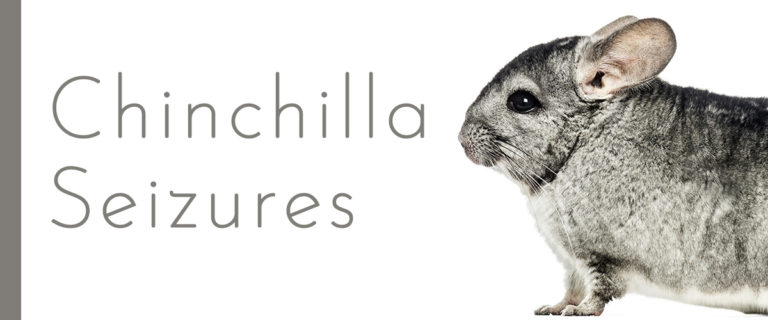I have to admit. I knew chinchillas, like humans and many other animal species, could suffer from seizures. But I didn’t know how many things could actually cause them. If chinchilla seizures are an issue in your household, you’ll need to understand how to manage them in order to provide your pet their best life.
Seizures usually cause involuntary changes in your chinchilla’s body movement or their body function. They can last from a few seconds to minutes. Regardless of how long they last, they’re scary. And understanding symptoms and what you can do is so important to see the best outcome.
SYMPTOMS
Spasms are the number one indicator of a seizure. If your chinchilla is spasming, it’s pretty likely that they’re having a seizure. Your chin may stiffen his body, curl inward, lay on one side twitching uncontrollably. Staggering, a rigid posture with foot and mouth spasms. Chinchilla seizures, too, though, an be subtle, with your chinchilla simply appearing to be “out of it.”
If you see any of these symptoms, or you suspect that something’s just not right with your pet, you need to get to your exotic vet ASAP. They’ll be able to determine what caused the seizure and treat the underlying problem.
CAUSES
Seizures are usually a symptom of another issue. Listeriosis, calcium/thiamine deficiency, head trauma, poisoning, heatstroke, hypoglycemia (a sudden drop in blood sugar), a genetic condition (sometimes seizures are caused by epilepsy, which is a tendency to seizure due to abnormal electrical activity in the brain). They can also be caused by an inappropriate diet with unsafe pellets or treats. (Healthy pellets found here.) There are tons of reasons your chinchilla could be seizing, and seizures can differ based on what’s causing it.
TREATMENT
Really, you should wait until the seizure passes. Make sure, though, that your chinchilla is at ground level and there’s nothing they could hurt themselves on. Don’t try to feed or have them drink; it's a choking hazard. Keep a record/diary of the date, time and length of the seizure and any activities happening before the seizure (playtime, sand bath, wheel, etc.).
After the seizure passes, check these three things, all which can contribute to a chinchilla seizure:
- Temperature. Overheating is a cause of chinchilla seizures.
- Diet. No fruits, nuts, or seeds!
- Teeth. Teeth that are white or yellow could indicate a calcium deficiency.
If your chinchilla’s seizures aren’t being caused by an environmental issue, it’s likely genetic, and you need to head to your exotic vet to identify the underlying issue. Sometimes seizures are caused by epilepsy, which is a tendency to seizure due to abnormal electrical activity in the brain. Talk to your vet to see if perhaps this is the cause.
Seizures can be fatal, but fortunately, many chinchillas still live long and happy lives with careful management of their condition. Partner with your vet to identify the cause, and come up with a plan of action that works for you and your pet. Best of luck. We’re rooting for you!





